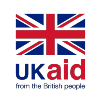In her acclaimed study of effective cross-organizational teamwork, Harvard Business School Professor Amy C. Edmonson concluded that “trying things that fail and then figuring out what works instead” is essential to achieve good performance, but what really makes a difference and delivers outstanding performance is to do so “while telling colleagues all about it – both the success and the failure”.
Prof. Edmonson’s research refers mainly to individuals and teams operating in the corporate environment, but my recent experience acting as an external reviewer of the paper Capacity Development in a Participatory Adaptive Programme: the Case of the Clarissa Consortium has convinced me that strengthening learning and effectiveness by sharing successes and failures fully applies to humanitarian and development interventions, and may be a necessary precondition for the International Cooperation sector to learn and improve, as a whole.
CLARISSA is an action-research intervention that develops innovative and context-appropriate solutions to increase options for children to avoid the worst forms of child labour (WFCL) in Bangladesh and Nepal. Taking an adaptive, participatory, and child-centred approach, the programme is designed to co-develop, together with stakeholders, innovation from the ground, which can improve the lives of children and their families. From its very beginning, CLARISSA partners have strived to share insights and reflections on the challenges they uncovered and the progress they made, through a variety of publications and blogs.
As you can see, CLARISSA is an exceptional and ground-breaking programme where everybody involved – from the donor and the consortium leadership, through the local partners and the country research and implementing teams, up to the many children participating in the action-research groups – has moved beyond their comfort zone and “usual ways of acting” to help the programme adapt and remain focused and effective.
The importance and challenges of capacity development
It could be said that most international cooperation interventions face, similar challenges to CLARISSA’s: they normally involve multi-country consortia, operate in complex and uncertain environments and face difficult funding and accountability constraints. As a result, all these interventions have a constant need to learn and adapt, and to develop the capacities of the people, teams and organizations involved.
This is not at all easy and is where the radical sharing of information, both about successes and failures, becomes decisive. It’s not just as an act of generosity – because sharing insights certainly allows other people, teams, and organisations to benefit from them – but even out of pure egoism: sharing our experiences and learning forces us to reflect intensively on what happened and what we did, and through conversations with others we start to perceive nuances and blind spots that would have gotten unnoticed. What is more, sharing in this way encourages and enables future exchanges of perspectives, interpretations, and experiences, which in turn further deepen our learning.
This not only applies to individual interventions, but to the whole international cooperation sector, which needs to become more agile and accelerate its learning capabilities. It would benefit much if self-reinforcing positive cycles of honest reflection, radical sharing and regular exchange were promoted, catalysing people’s commitment and capacity to speak up and learn at all levels, places, and tasks they engage with.
CLARISSA’s approach to capacity development
The newly published CLARISSA Capacity Development paper serves as a great example of what I have just advocated for. The paper provides a detailed and honest account of how CLARISSA approached capacity development during the programme’s initial implementation stages. It documents their endeavours and the instruments they used, explains the rationale for key decisions, reflects on the issues and difficulties they faced, and shares the main insights obtained –including mistakes, biases and blind spots discovered in the process.
When read between the lines, the paper raises fundamental dilemmas that have struck me as extremely compelling. The programme has successfully embedded an ongoing capacity development process within its adaptive management and learning strategy, and has proposed useful models to operationalise it. However, their focus on individual competencies within country teams and on unidirectional (top-down) capacity development modalities suggests a biased preliminary assumption: that partners holding leadership responsibilities at the consortium level do not themselves need much capacity development support. Such bias would impact the capacity to leverage reciprocal learning opportunities, both downward and upward. Additionally, most of the methods used –from the ‘capacity assessment tool’ to the ‘capacity development plans’– had to be created ad-hoc and almost from scratch, meaning that there are few standardized approaches available for the sector, and a lot of “reinventing the wheel” is surely happening. Finally, the paper identifies a fundamental conflict “between an iterative approach, responding to capacity needs as they arise, and [a] more holistic, comprehensive planning of capacity development”.
I cannot help but wonder if all these tensions couldn’t be softened if an integrated and fractal conceptualization of learning and experimentation within programmes was available (including a set of granular and adaptable tools).This will then be applied to the different levels and geographies where a programme operates, at different timescales for each, while including all staff and the various tasks they carry out. Such a model could provide the scaffolding where both planned and emergent capacity development actions could prosper across a continuum, inter-connecting the different levels of operation while enabling everybody involved to speak up and implement their work through plenty of smart experimentation, reflection, and learning. A recipe that Prof. Edmonson would surely recommend for “good teaming”.
